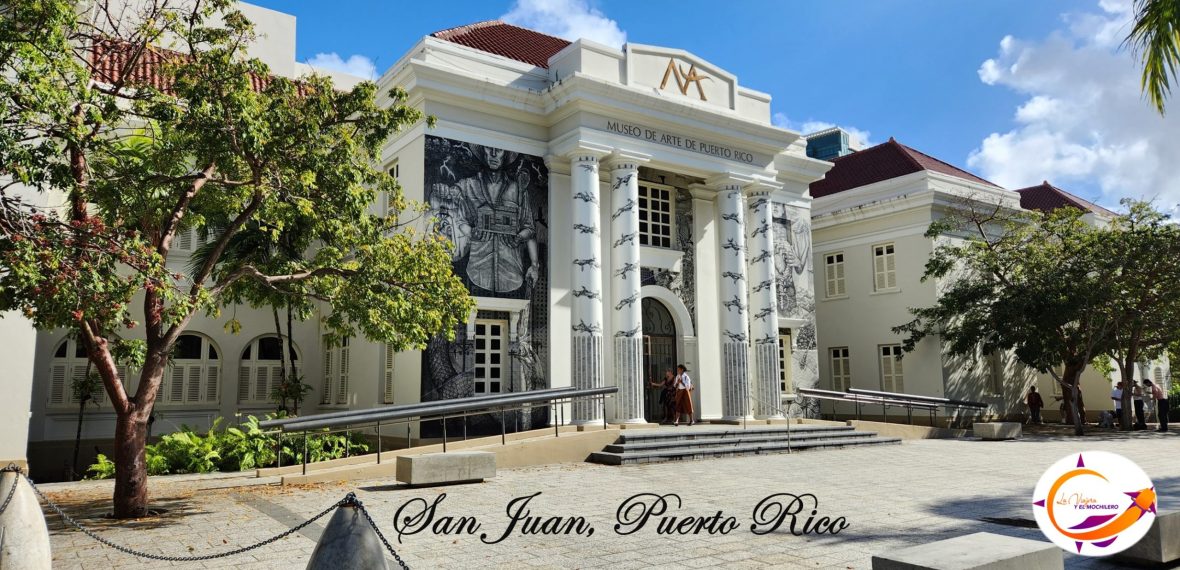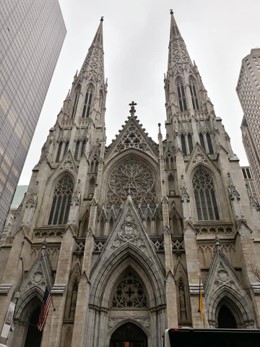 The city of New York was designated Diocese in 1808, which motivated the construction of a cathedral for the first bishop of the city. It was located in the lower part of the city, on Mulberry Street, where it still exists. Given the large population of Irish Catholics who lived in the city the patron saint of Ireland was designated for the new cathedral. In 1850, Pope Pius IX converted the Diocese of New York into an Archdiocese and in 1853, Archbishop Joseph John Hughes announced the intention to build a new cathedral to replace the previous one. It is this structure located on 5th Avenue, the headquarters of the Archdiocese of New York.
The city of New York was designated Diocese in 1808, which motivated the construction of a cathedral for the first bishop of the city. It was located in the lower part of the city, on Mulberry Street, where it still exists. Given the large population of Irish Catholics who lived in the city the patron saint of Ireland was designated for the new cathedral. In 1850, Pope Pius IX converted the Diocese of New York into an Archdiocese and in 1853, Archbishop Joseph John Hughes announced the intention to build a new cathedral to replace the previous one. It is this structure located on 5th Avenue, the headquarters of the Archdiocese of New York.
 The land site of the current Cathedral was originally purchased by the Jesuists in 1810 to establish a school that later closed. In 1814 the property is sold to the Diocese and the San Juan Evangelist Church is built on said property. Unfortunately, the Church could not meet its mortgage payments and it was foreclosed in 1844. However, the efforts of a new pastor succeeded in recovering the property, paying the mortgage debt and adjudicating the property in his name. The Archdiocese repurchases the property to begin the construction of the new Cathedral.
The land site of the current Cathedral was originally purchased by the Jesuists in 1810 to establish a school that later closed. In 1814 the property is sold to the Diocese and the San Juan Evangelist Church is built on said property. Unfortunately, the Church could not meet its mortgage payments and it was foreclosed in 1844. However, the efforts of a new pastor succeeded in recovering the property, paying the mortgage debt and adjudicating the property in his name. The Archdiocese repurchases the property to begin the construction of the new Cathedral.
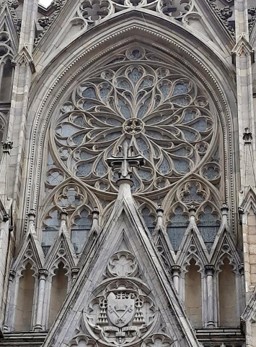
The neo-Gothic structure was completed in 1878 and in 1888 the two towers were added. In 2012, an extensive renovation was begun, completed on September 17, 2015. It is important to note that Saint Patrick’s Cathedral is the largest neo-Gothic church in North America.
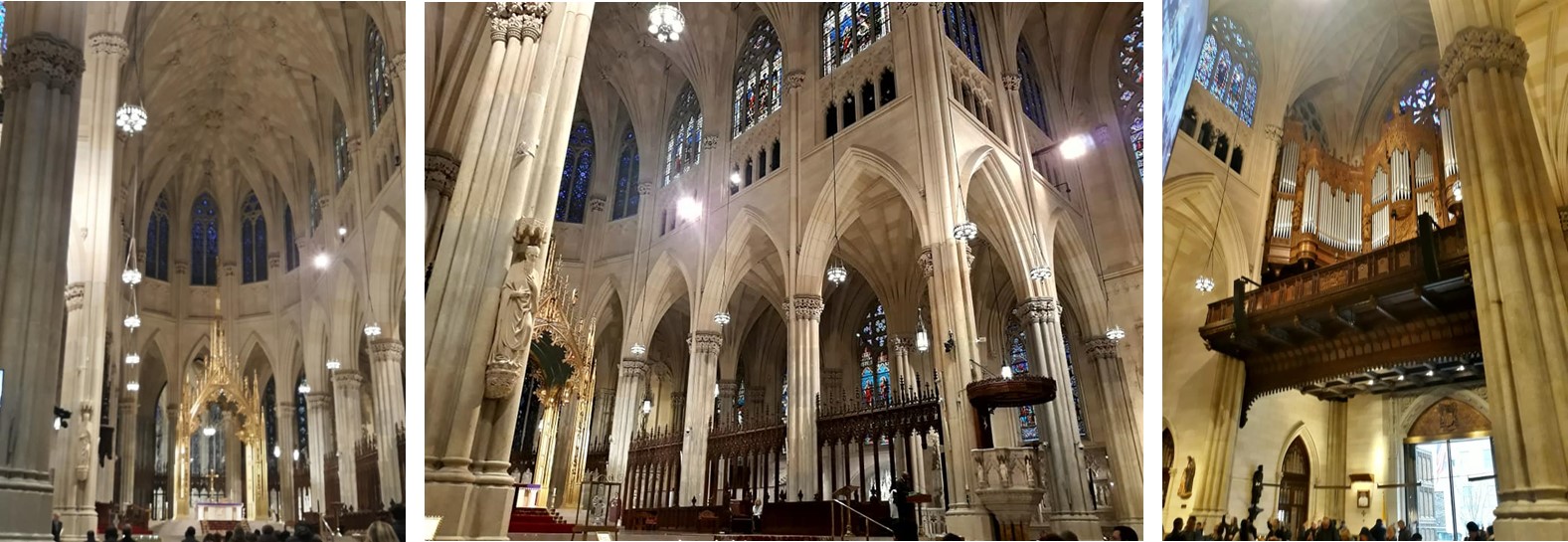
The body of the structure is mainly marble, while the roof is made of slate. The stained glass windows were created by artists from Boston, France and England. The Saint Elizabeth altar is authored by the Italian Paolo Medici. The side altars are the contribution of the sculptor Dominic Borgia and the company Tiffany & Co. The main altar underwent renovations in the years 1930 and 1940 and then again in 1980.
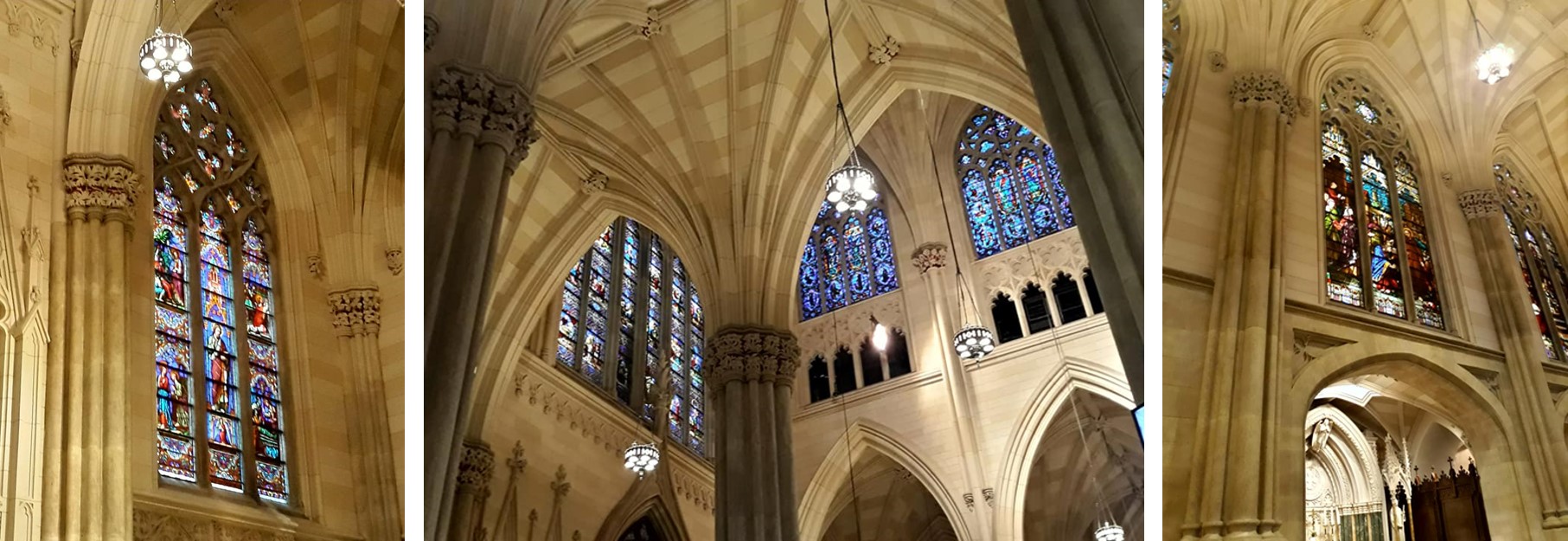
Inside the cathedral is the “Pieta” sculpted by William Ordway Partridge with a size three times larger than the work of Michelangelo Buonarroti.
Under the main altar is a crypt where nine archbishops rest, seven of which were Cardinals.
